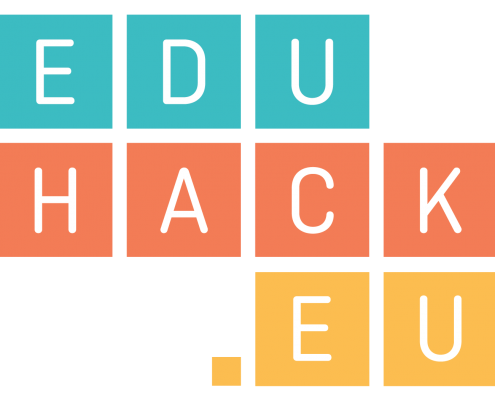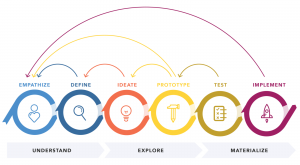Why a Toolbox?
The EduHack Toolbox aims to set up a structure for independently organised EduHack events. Under this system, all outputs of the project would be openly licensed and improved to allow for reuse and/or modification by third party organisations. In addition, any organisation (typically but not exclusively an institution of Higher Education) would be able to apply to the EduHack consortium to hold an EduHack branded course and event, providing that they agree to join the EduHack Network – an organisation of institutions, seeded by the consortium, dedicated to the continuing organisation and promotion of these events, and updating and improving of the course curriculum and learning activities.
Introduction to Design Thinking
Design Thinking is a methodology used by designers to solve complex problems, and find desirable solutions for clients. It’s a human centred and collaborative approach to problem solving that is creative, iterative, and practical. It’s the essential ability to combine empathy, creativity, and rationality to meet user needs and drive business success. A design mindset is not problem-focused, it’s solution focused and action oriented towards creating a preferred future. Design Thinking draws upon logic, imagination, intuition, and systemic reasoning, to explore possibilities of what could be – and to create desired outcomes that benefit the end user.
Design Thinking offers a structured framework for understanding and pursuing innovation in ways that contribute to organic growth and add real value to our target audiences’ work. The design thinking cycle involves observation to discover unmet needs within the context and constraints of a particular situation, framing the opportunity and scope of innovation, generating creative ideas, testing and refining solutions.
The EduHack Toolbox has adopted this Design Thinking approach. The 6 steps are explained in more detail here.



